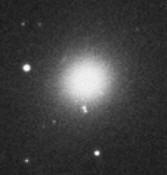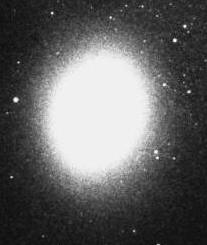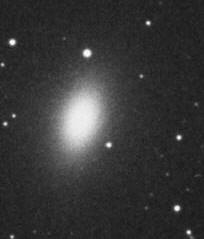Elliptical galaxies are also named because of their shapes. Elliptical galaxies range from circular (remember, a circle is an ellipse!) to long, narrow, and cigar-shaped.
Elliptical galaxies are denoted by the letter E. They are also given a number from 0 to 7. An E0 galaxy looks like a circle. An E7 galaxy is very long and thin. Astronomers have specific mathematical definitions for each number, but these definitions are beyond the scope of this project. With some practice, you can learn to visually tell what type of elliptical galaxy you are observing.

M89 – an E0 galaxy
Courtesy the Digitized Sky Survey

M32 – An E2 galaxy
Courtesy AURA/NOAO/NSF

NGC 4621 – an E5 galaxy
Courtesy the Digitized Sky Survey
Elliptical galaxies have a large range of sizes. The largest elliptical galaxies can be over a million light-years in diameter. The smallest “dwarf elliptical” galaxies are less than one-tenth the size of the Milky Way!
Elliptical galaxies have very little gas and dust. Since stars form from gas, little star formation occurs in elliptical galaxies. Most of their stars are old and red.
